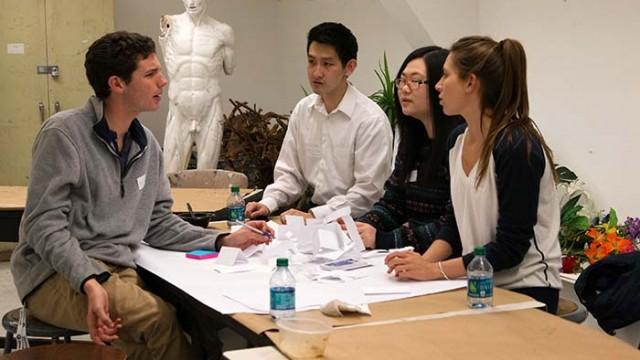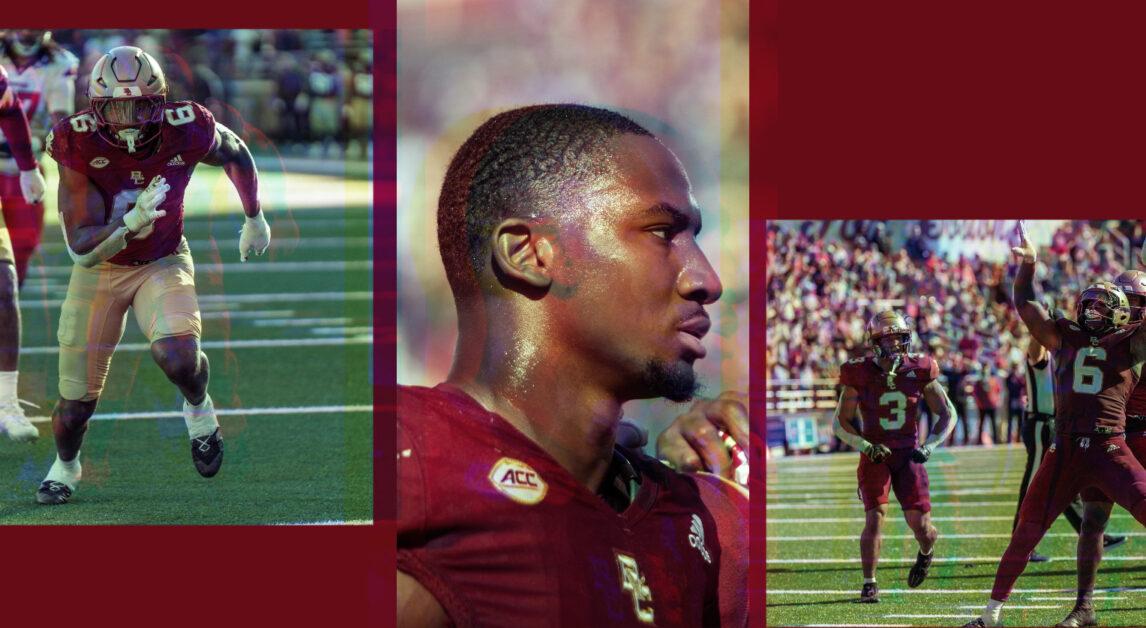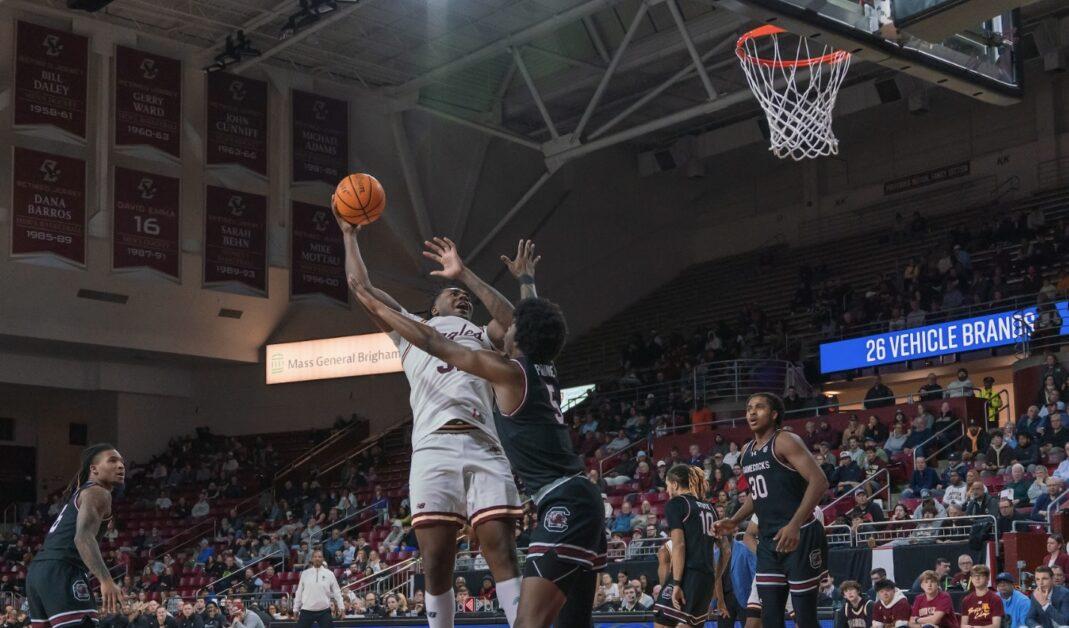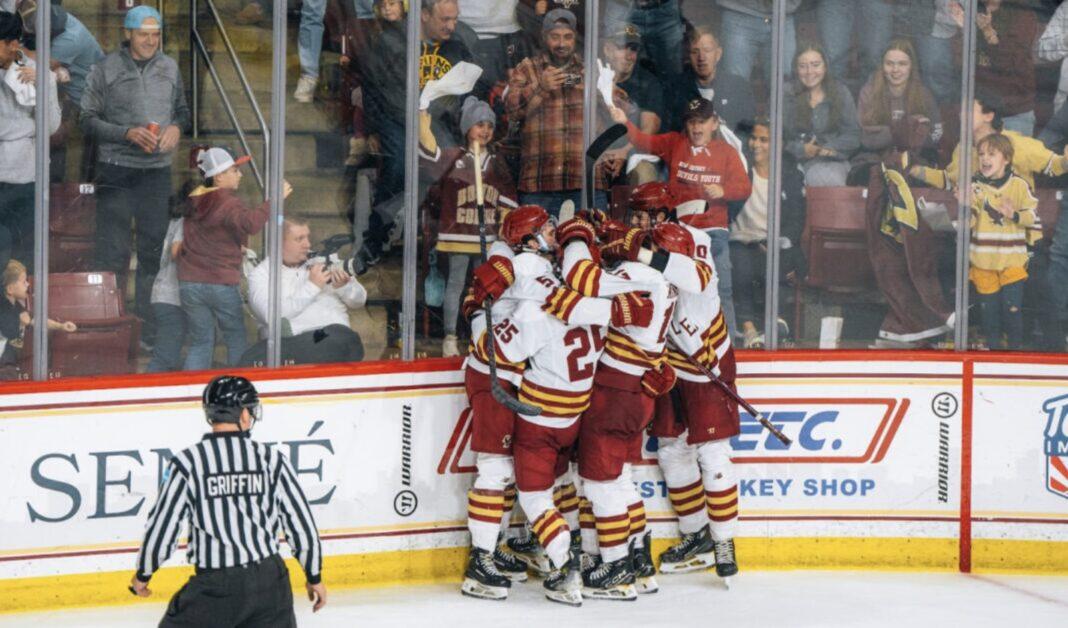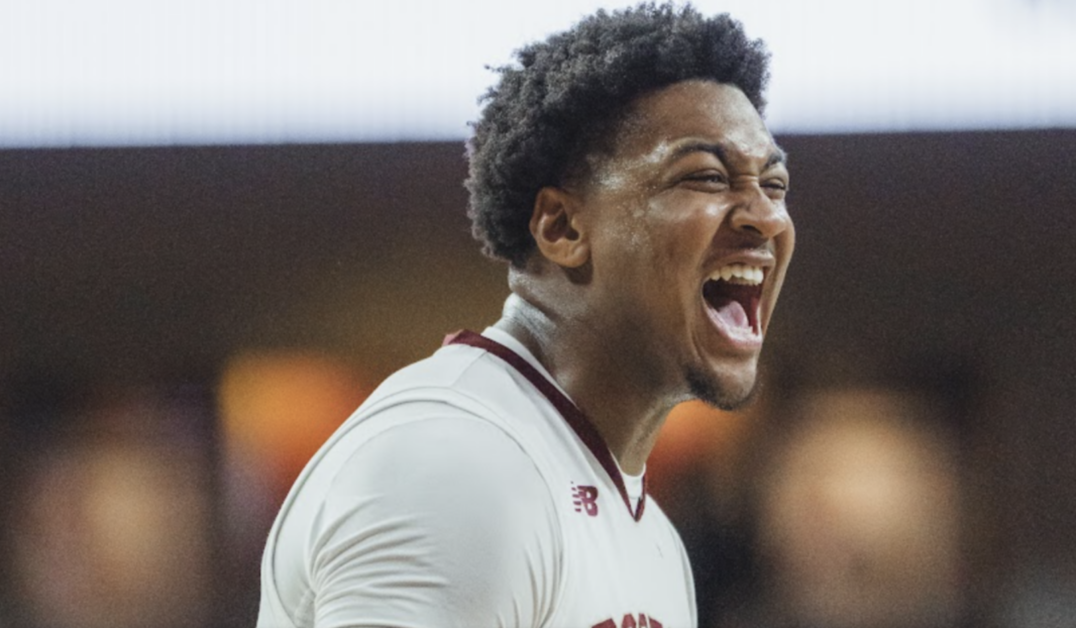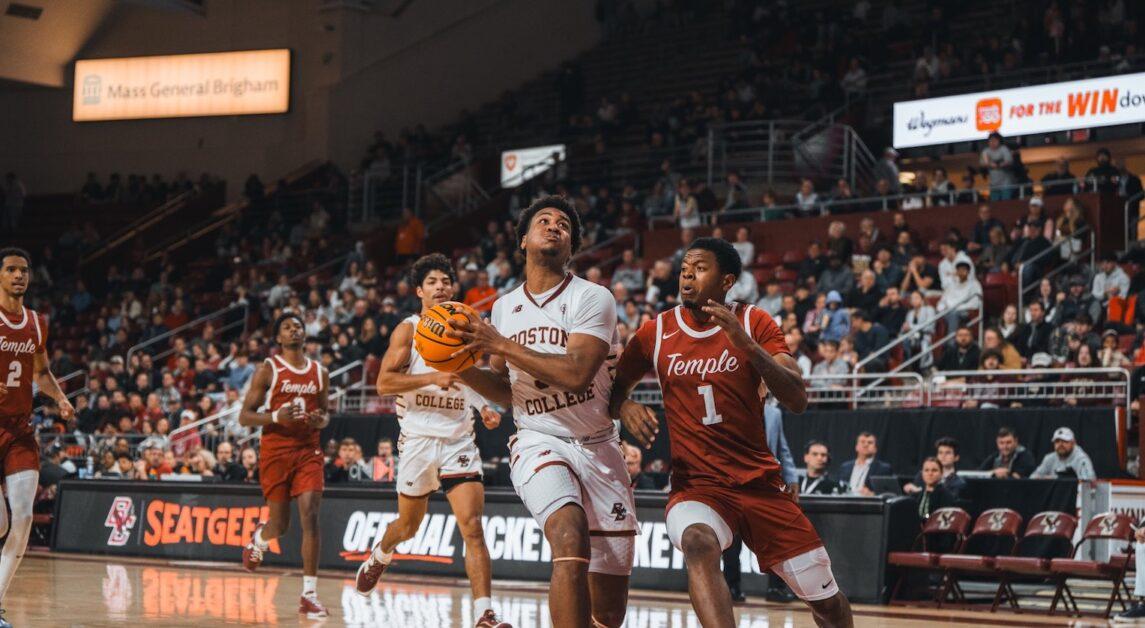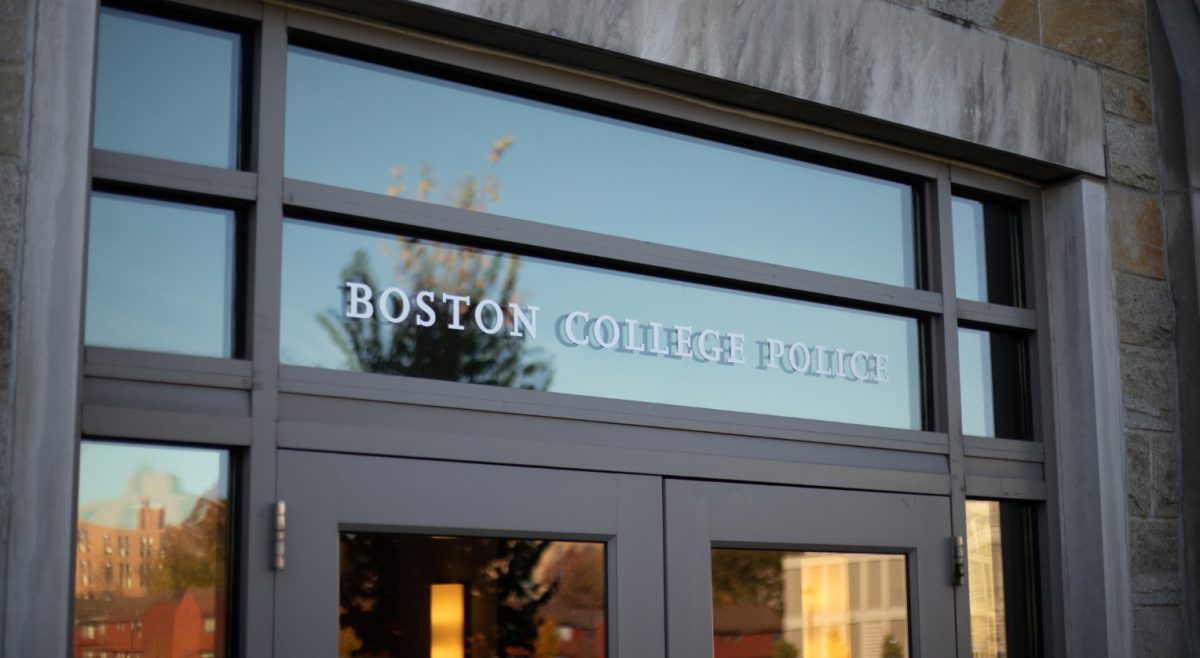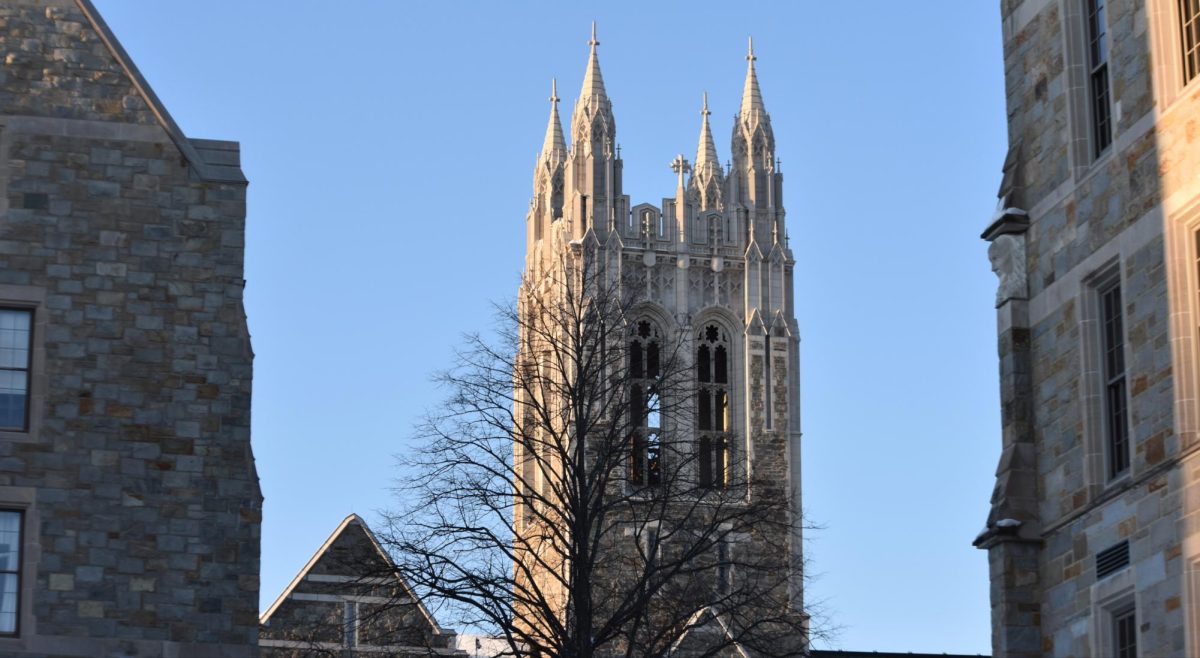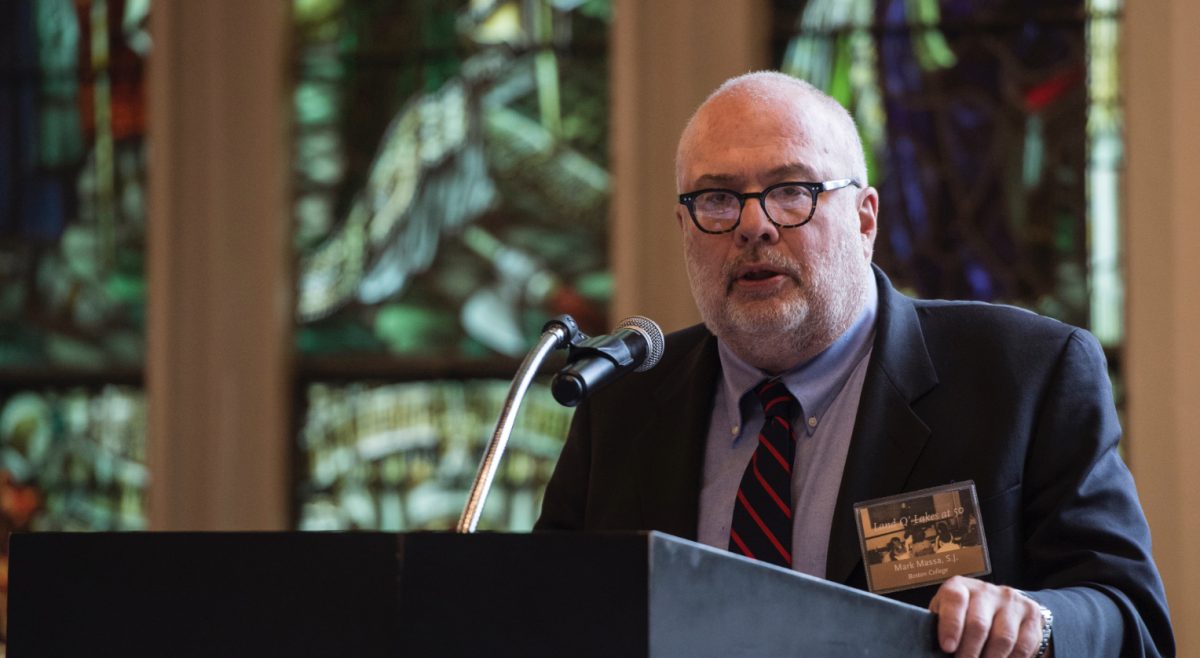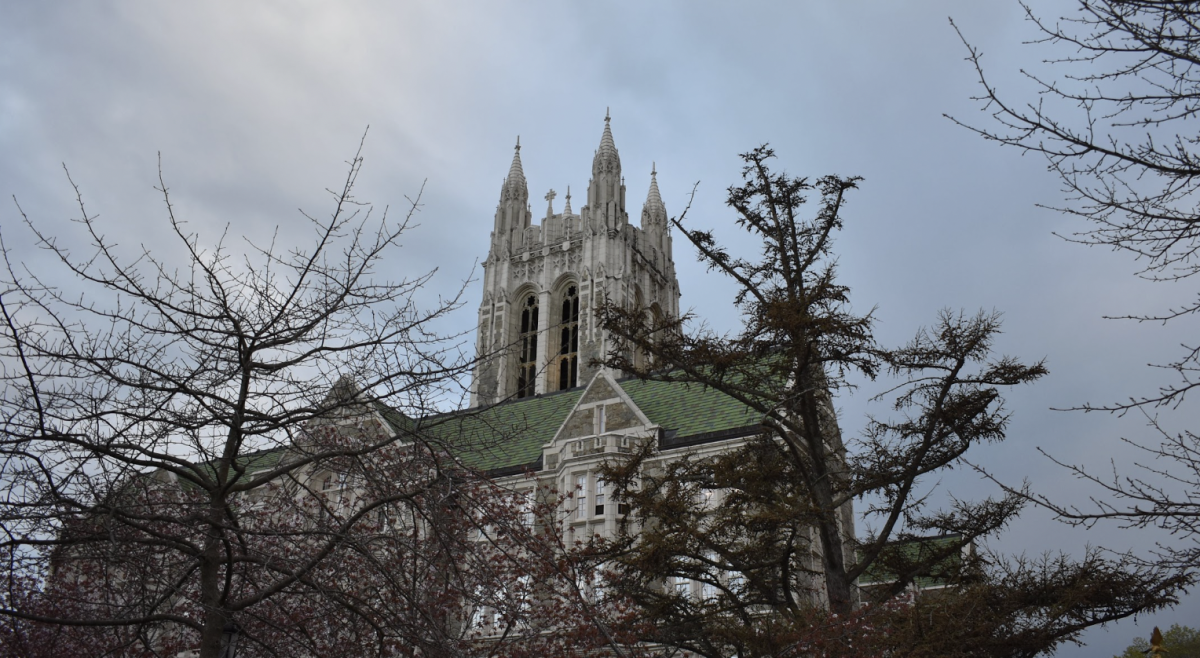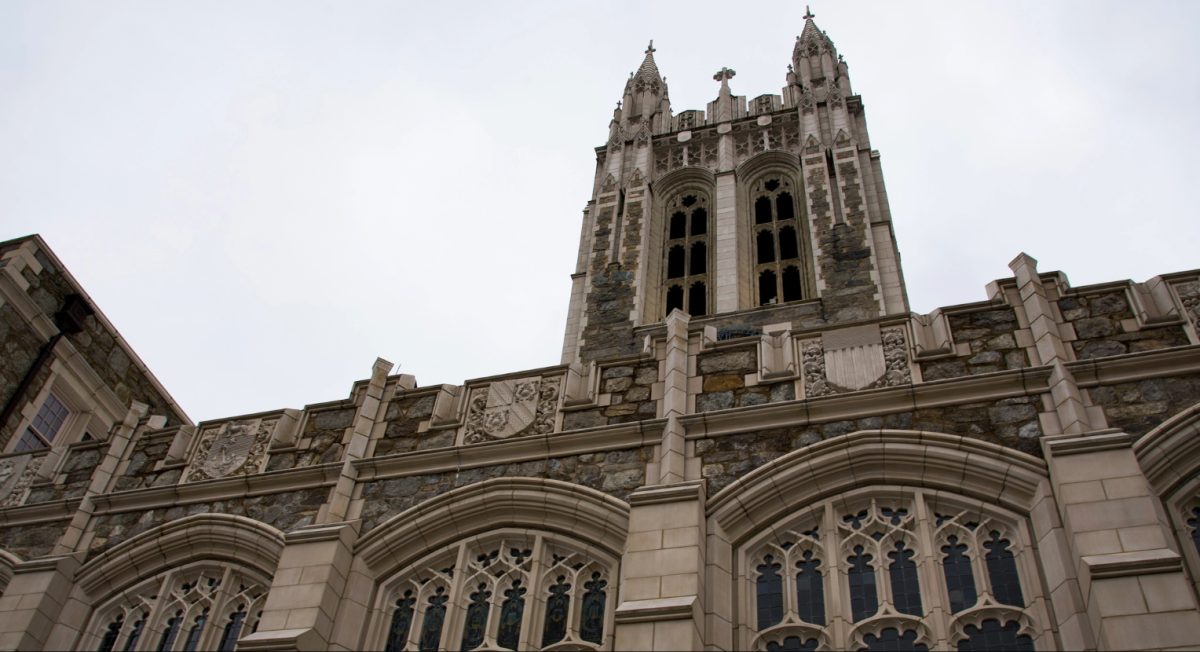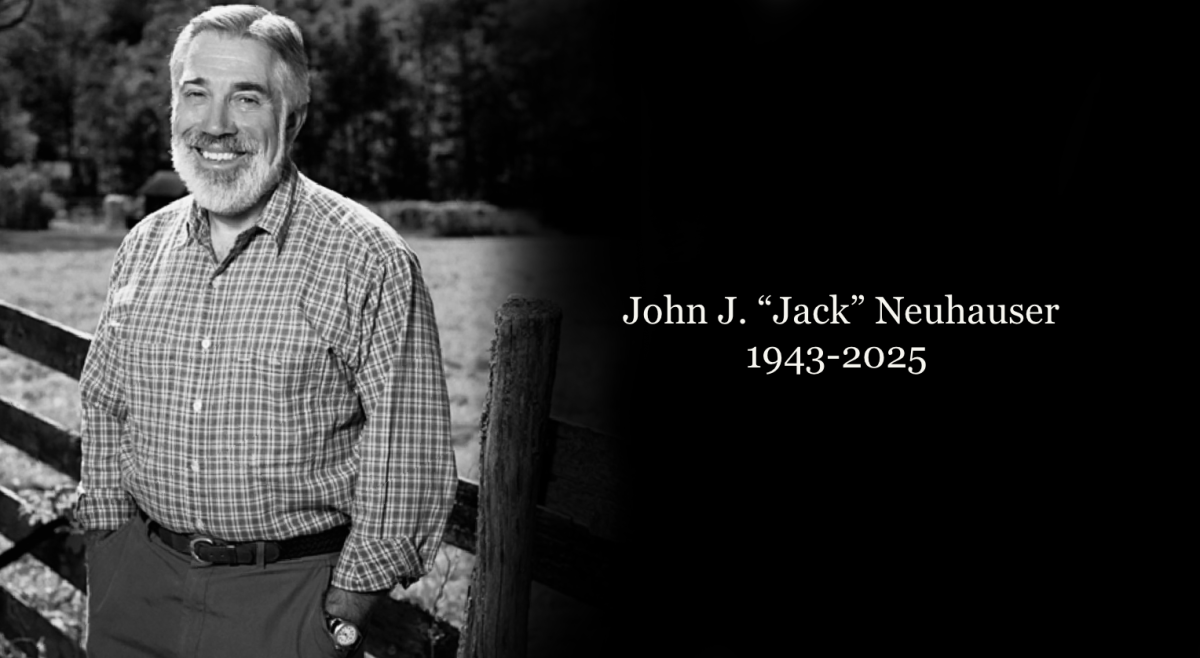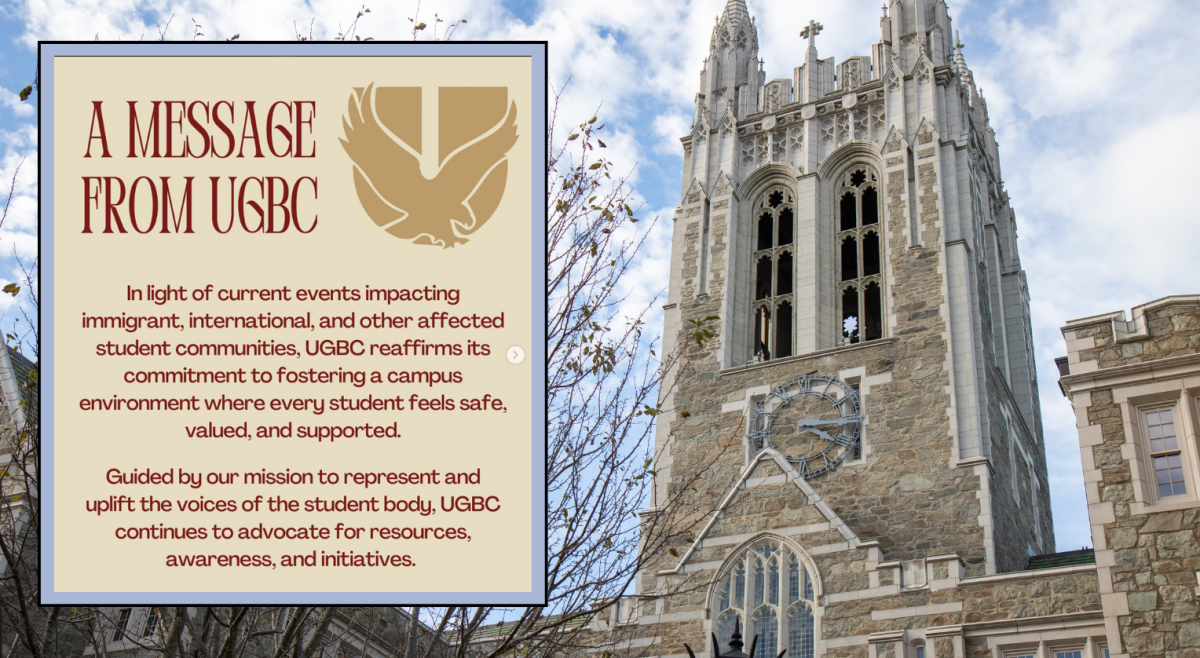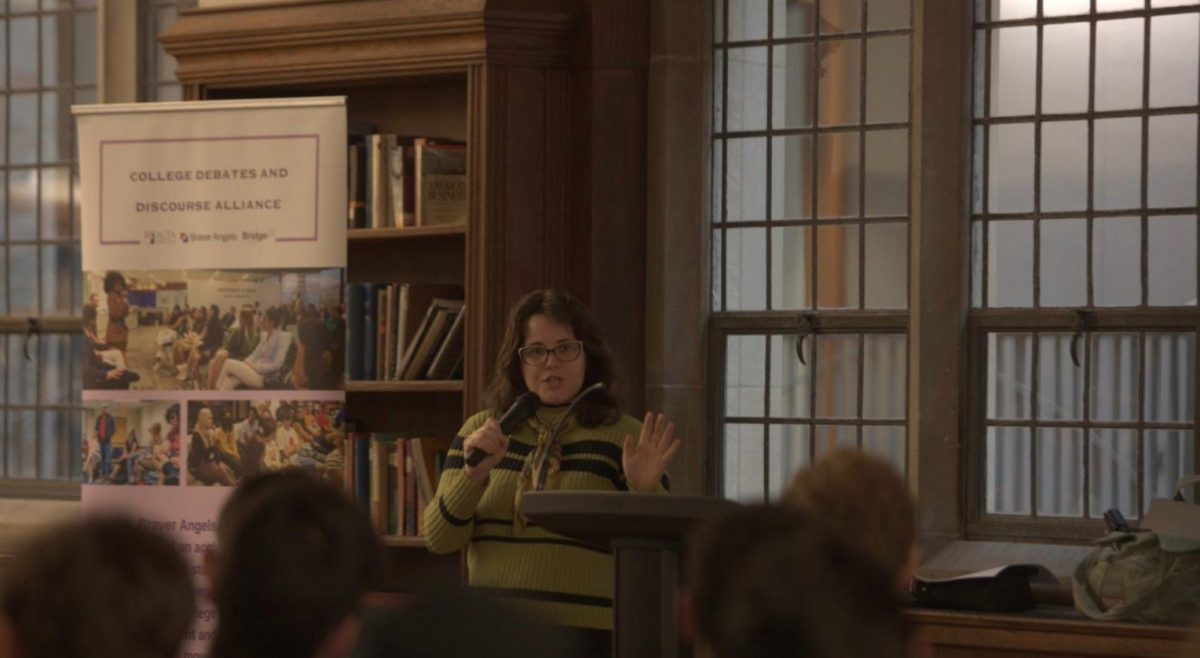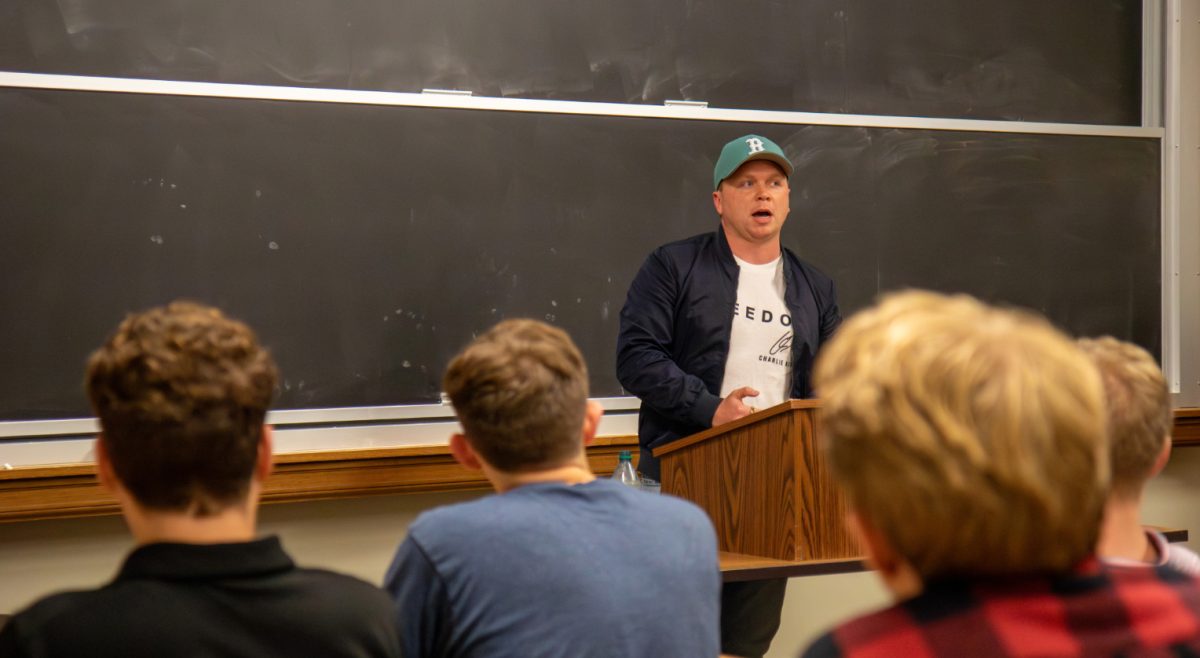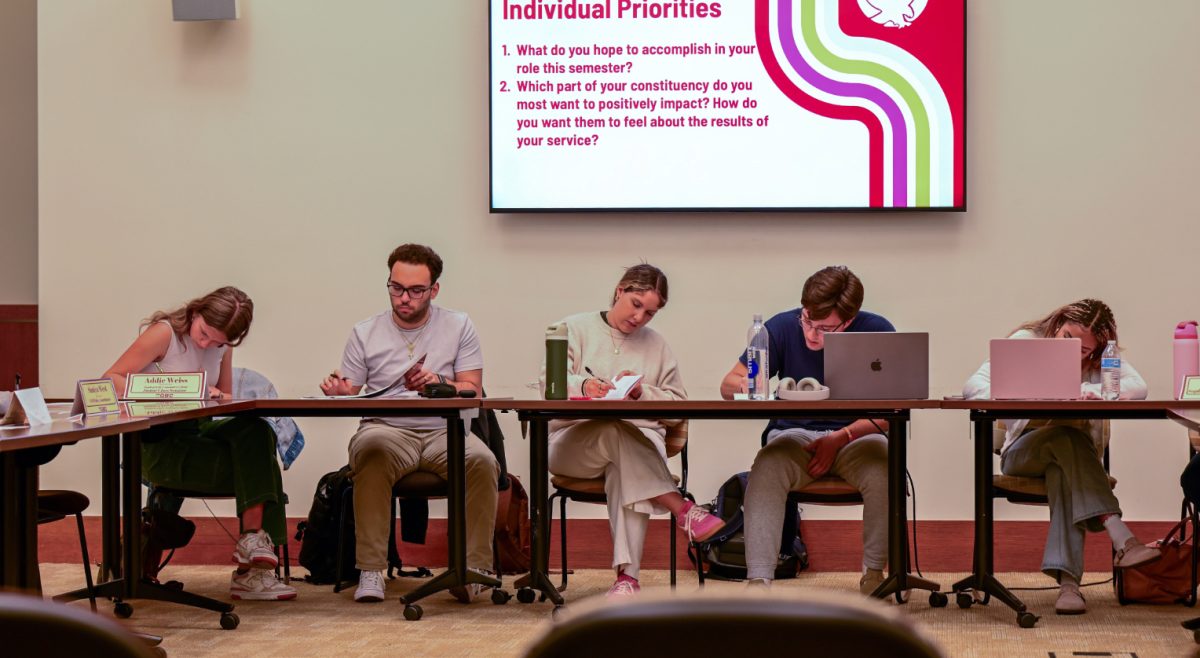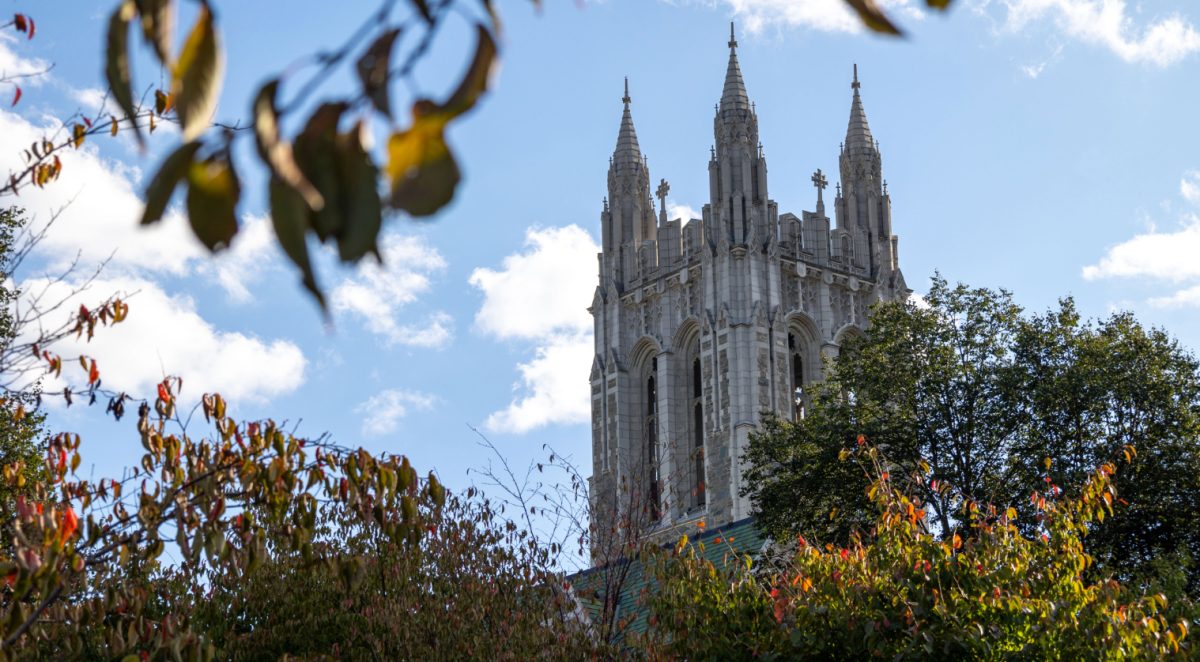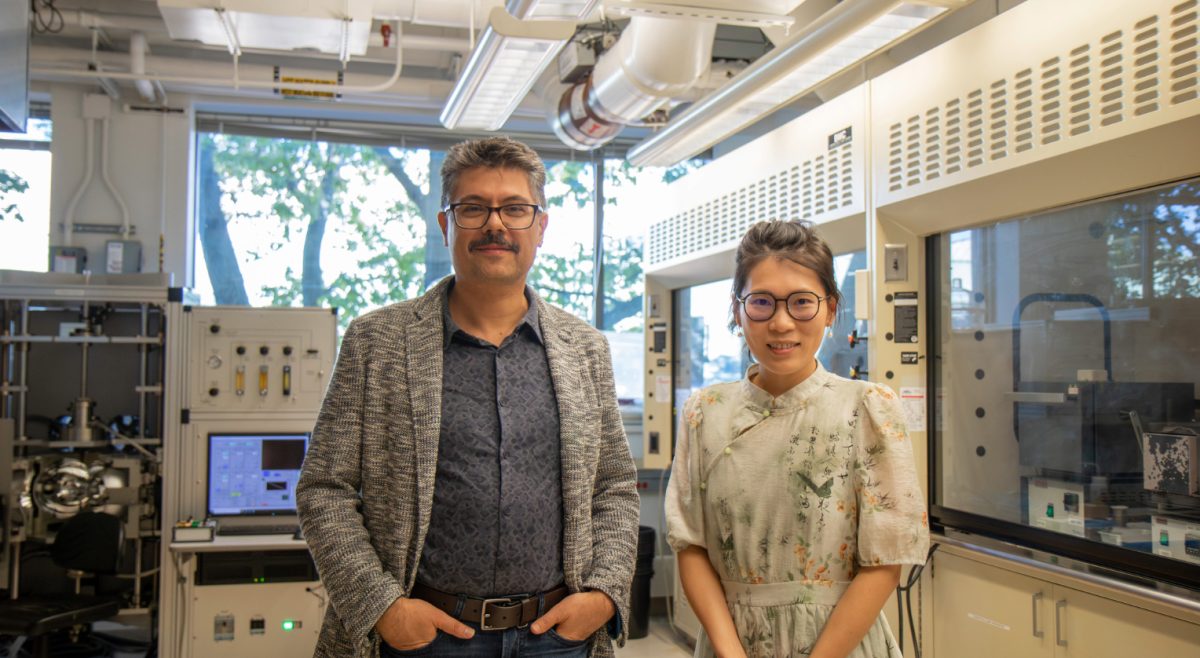Through the use of competition, creativity, and collaboration, the Shea Center for Entrepreneurship’s “Meet @ Shea” event on Tuesday night brought students together to put their problem-solving skills to the test. This was the second Meet @ Shea event the Center has put on this year.
The event, which was put on by four student leaders from the Start @ Shea board, featured information systems professor George Wyner. He shared his personal experience with innovation and offered attendees problem-solving methods.
Sixteen students attended the event, and were broken into groups of four to perform three challenges of differing difficulties.
“I’ve never done anything like this before,” Will Hennessey, CSOM ’17, said. “I’m looking forward to picking at my creativity.”
The groups were first pitted against each other in competition to build the tallest tower out of only index cards. When the time clock began, students rushed to open their packs of cards and immediately started configuring the paper into different shapes.
“We want to bring together students—who may have otherwise never met—in an environment that encourages the cross-pollination of ideas and makes entrepreneurship more accessible.”
– Pamela Taylor, organizer of Meet @ Shea and MCAS ’16
The groups’ methods to build their towers differed. Some groups started by individually trying to find the best method to stack, while others stuck to their original blueprint plans. By the end of the seven minutes, some towers stacked over two feet tall.
Students then deliberated over ways that they could have improved their towers, and then were given two minutes to put their improvements into place. All innovation takes reflection and revising, Pamela Taylor, organizer of Meet @ Shea and MCAS ’16, explained.
The next challenge was intellectually focused, and forced students to describe the color yellow to a blind person. All four of the groups came to similar conclusions: the only way to describe a color to a person without sight, is to use other senses.
“We wanted to describe it with senses that blind people do have,” Lizzie Manning, MCAS ’16, said. “We said it would feel like the warmth on your face, you could play songs like “Yellow Mellow,” and you could have them taste lemonade or yellow cake.”
The third challenge was centered around Wyner’s method of problem-solving: drawing a picture. Using personal anecdotes, Wyner explained his definition of “process thinking.”
“Sometimes you only see what you’re doing now, in this moment, and not the future,” Wyner said. “If we open up our minds, we can open up new ideas.”
Wyner then instructed the students to come up with a plan to solve the problem of food waste within a 12-minute period. The students were meant to express their ideas in a drawing, showing the different activities of each counterpart of the process.
Some students drew on real-life experiences. One group came up with an agenda to reduce food waste in Eagles Nest. Another participant drew upon his time working in a deli and used his personal experience to find a solution to excess food production.
Groups also took into account BC culture, human nature, and societal issues when trying to solve the issue of food waste.
Wyner explained that the project was meant to be difficult. When students ran out of ideas, the visual diagrams would help them see the big picture ideas, he said.
The Meet @ Shea events are intended to bring together students from all of BC’s schools and allow them to discuss innovation and start-up ideas. The Shea Center for Entrepreneurship also hosts Accelerate @ Shea, a program for students who already have start-up ideas.
“We want to bring together students—who may have otherwise never met—in an environment that encourages the cross-pollination of ideas and makes entrepreneurship more accessible,” Taylor said.
Featured Image by Francisco Ruela / Heights Staff

